In today’s rapidly evolving business landscape, organizations need to harness the power of technology and automation to stay ahead of the competition. When it comes to managing customer relationships and driving revenue, integrating Salesforce with marketing automation emerges as a winning combination. This dynamic duo empowers businesses to streamline their sales and marketing processes, enhance customer engagement, and unlock valuable insights. In this blog post, we’ll explore the benefits, challenges, and best practices of integrating Salesforce with marketing automation, highlighting how this integration can be a game-changer for businesses.
The Rise of Salesforce and Marketing Automation
Salesforce and marketing automation have individually revolutionized the way businesses operate. Salesforce is the world’s leading customer relationship management (CRM) platform, empowering organizations to manage their sales, marketing, and customer service processes effectively. On the other hand, marketing automation tools offer advanced capabilities to streamline marketing efforts, including lead nurturing, email campaigns, and analytics. The integration of these two powerhouses amplifies their impact and opens new avenues for businesses to drive revenue and customer engagement.
Benefits of Integrating Salesforce with Marketing Automation
Streamlined Lead Management:
Integrating Salesforce with marketing automation allows businesses to seamlessly transfer lead data between the two systems. This integration ensures a smooth handoff from marketing to sales, eliminating manual data entry and reducing the risk of data errors. Marketing automation nurtures leads with personalized content, while Salesforce provides sales teams with a unified view of leads, enabling timely follow-ups and improved conversion rates.
Enhanced Marketing Campaigns:
By integrating Salesforce with marketing automation, businesses can supercharge their marketing campaigns. The integration enables marketers to leverage Salesforce data to create targeted and personalized campaigns based on customer preferences, purchase history, and engagement patterns. Real-time synchronization between the systems ensures that marketing efforts are always up to date, leading to more effective campaigns and higher ROI.
Overcoming Integration Challenges
While the integration of Salesforce and marketing automation brings immense benefits, it is not without its challenges. Some common hurdles include:
Data Integration:
Integrating two complex systems like Salesforce and marketing automation requires careful planning and attention to data mapping. It’s crucial to define the data fields that need to be synchronized, ensuring a seamless flow of information between the two platforms. Proper data hygiene practices and regular maintenance are essential to maintain data integrity and accuracy.
System Compatibility:
Different marketing automation tools may have varying degrees of compatibility with Salesforce. Before integrating, businesses need to ensure that their chosen marketing automation platform offers robust integration capabilities with Salesforce. Working closely with IT and leveraging the expertise of integration consultants can help overcome compatibility issues.
Best Practices for Successful Integration
To ensure a successful integration of Salesforce with marketing automation, businesses should follow these best practices:
Set Clear Objectives:
Before embarking on the integration journey, clearly define your goals and objectives. Identify key performance indicators (KPIs) to measure the success of the integration and align them with your overall business strategy.
Involve Stakeholders:
Engage stakeholders from both the sales and marketing teams throughout the integration process. Gather their input, address concerns, and ensure that the integration meets their specific needs. This collaborative approach fosters adoption and buy-in from all parties involved.
Integration Use Cases
Lead Nurturing and Scoring:
By integrating Salesforce with marketing automation, businesses can implement lead nurturing programs that automatically deliver personalized content to prospects based on their behavior, demographics, and interests. Lead scoring enables the identification of high-quality leads, empowering sales teams to prioritize their efforts and close deals faster.
Campaign ROI Tracking:
The integration allows marketers to track the ROI of their campaigns more accurately. By connecting marketing automation data with Salesforce’s revenue tracking capabilities, businesses can measure the impact of their campaigns on revenue generation. This insight enables marketers to optimize their strategies, allocate resources effectively, and focus on activities that yield the highest returns.
Personalized Customer Journeys:
Integrating Salesforce with marketing automation enables businesses to create personalized customer journeys based on individual interactions and preferences. By leveraging customer data from Salesforce, marketers can deliver tailored content and offers at each stage of the buyer’s journey, fostering engagement and increasing conversion rates. This personalized approach strengthens customer relationships and drives long-term loyalty.
Steps to a Successful Integration
Evaluate Integration Options:
Research and evaluate different integration options available in the market. Consider factors such as ease of use, scalability, and the level of support provided by the integration solution. Choose a solution that aligns with your business requirements and offers seamless connectivity between Salesforce and your marketing automation platform.
Plan Data Mapping:
Define the data fields and objects that need to be synchronized between Salesforce and your marketing automation tool. Determine how data will flow between the systems, ensuring that critical information, such as leads, contacts, and opportunities, is accurately transferred. Map out the integration process and establish guidelines for data hygiene and maintenance.
Implementation and Testing
Collaborate with IT and Integration Experts:
Work closely with your IT department and Salesforce integration consultants to implement the integration successfully. Their expertise will ensure that the integration is configured correctly, data is mapped accurately, and any technical challenges are addressed promptly. Regular communication and collaboration throughout the implementation process are vital to achieving a seamless integration.
Test and Validate:
Thoroughly test the integration before going live. Validate data synchronization, ensure that workflows and automation rules are functioning as intended, and verify that all systems are communicating effectively. Identify and resolve any issues or discrepancies to guarantee a smooth transition and optimal performance.
Training and Adoption
Provide Training and Documentation:
Offer comprehensive training to sales and marketing teams on how to leverage the integrated systems effectively. Provide detailed documentation, user guides, and resources to support their understanding and usage of the integrated solution. Encourage employees to ask questions, provide feedback, and share best practices to foster adoption and ongoing improvement.
Monitor and Measure Adoption:
Regularly monitor the adoption and usage of the integrated systems. Track key metrics, such as user activity, lead conversion rates, and campaign performance, to gauge the impact of the integration on revenue and customer engagement. Use this data to identify areas for improvement and refine your strategies as needed.
Continuous Optimization
Analyze and Refine Workflows:
Regularly review and analyze the workflows and processes established through the integration. Identify bottlenecks, redundancies, or areas for optimization. Leverage automation and advanced analytics capabilities to streamline and improve the efficiency of your sales and marketing operations continually.
Data Governance and Quality Control:
Maintain data hygiene and governance practices to ensure the accuracy and integrity of the integrated data. Implement processes for data cleansing, deduplication, and regular data audits. Establish protocols for resolving data conflicts and discrepancies promptly, minimizing the risk of errors and data inconsistency.
The Future of Integration
As technology continues to advance, the integration between Salesforce and marketing automation will only become more powerful and seamless. AI-powered analytics, predictive lead scoring, and advanced personalization capabilities will enable businesses to further optimize their revenue-driving strategies. The integration will play a crucial role in supporting omni-channel marketing efforts, leveraging data from various touchpoints to deliver cohesive and personalized experiences across multiple platforms.
Conclusion
Integrating Salesforce with marketing automation presents a game-changing opportunity for businesses to drive revenue growth and enhance customer engagement. By streamlining lead management, enhancing marketing campaigns, and gaining valuable insights, organizations can optimize their sales and marketing efforts. While challenges may arise during the integration process, careful planning, collaboration, and adherence to best practices can ensure a successful implementation.
As businesses continue to evolve in a technology-driven world, the integration of Salesforce with marketing automation will remain a vital strategy for maximizing customer interactions, increasing conversions, and delivering personalized experiences. By harnessing the power of this dynamic duo, organizations can propel their revenue and customer engagement to new heights, staying ahead of the competition and fostering long-term success.
































